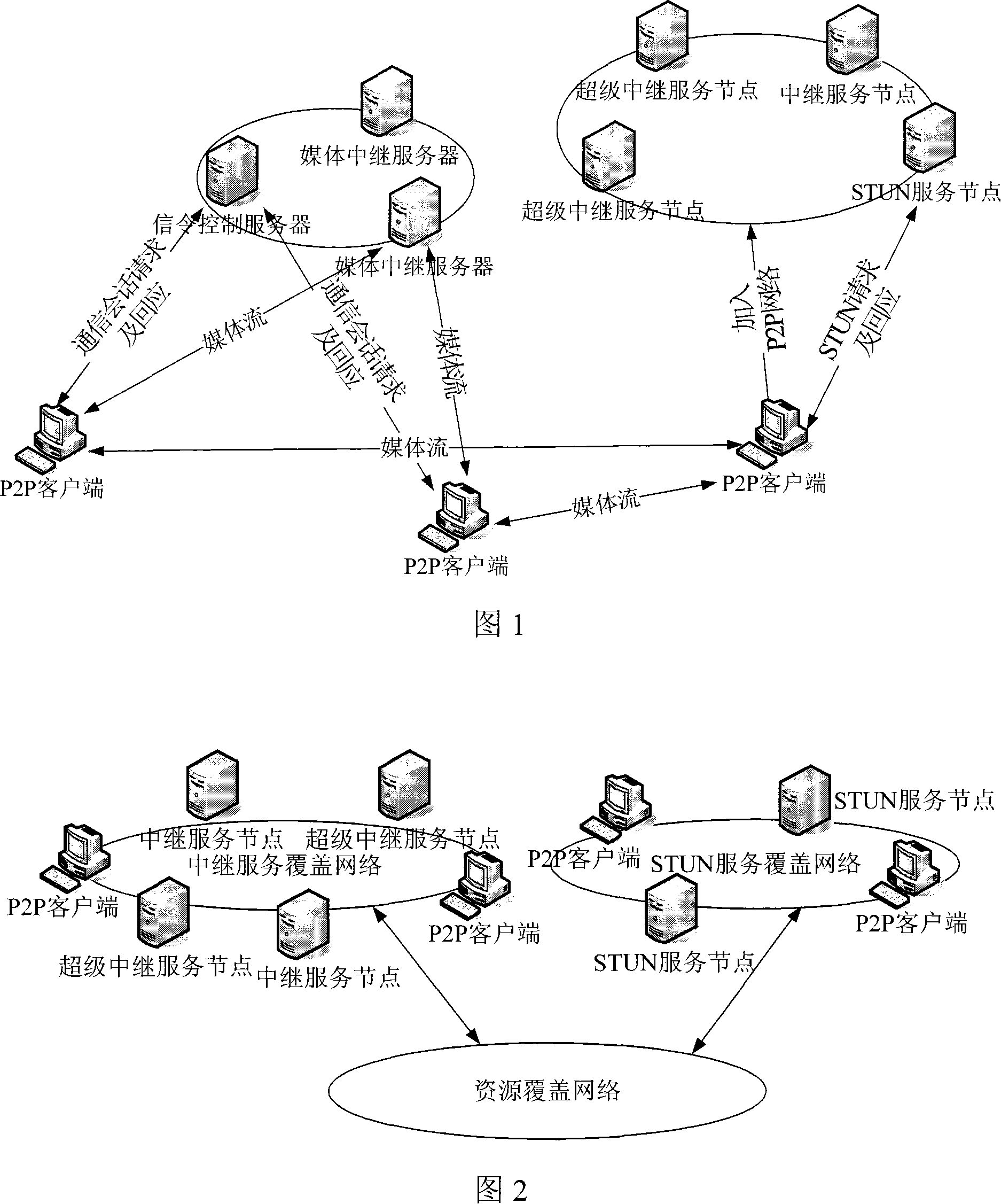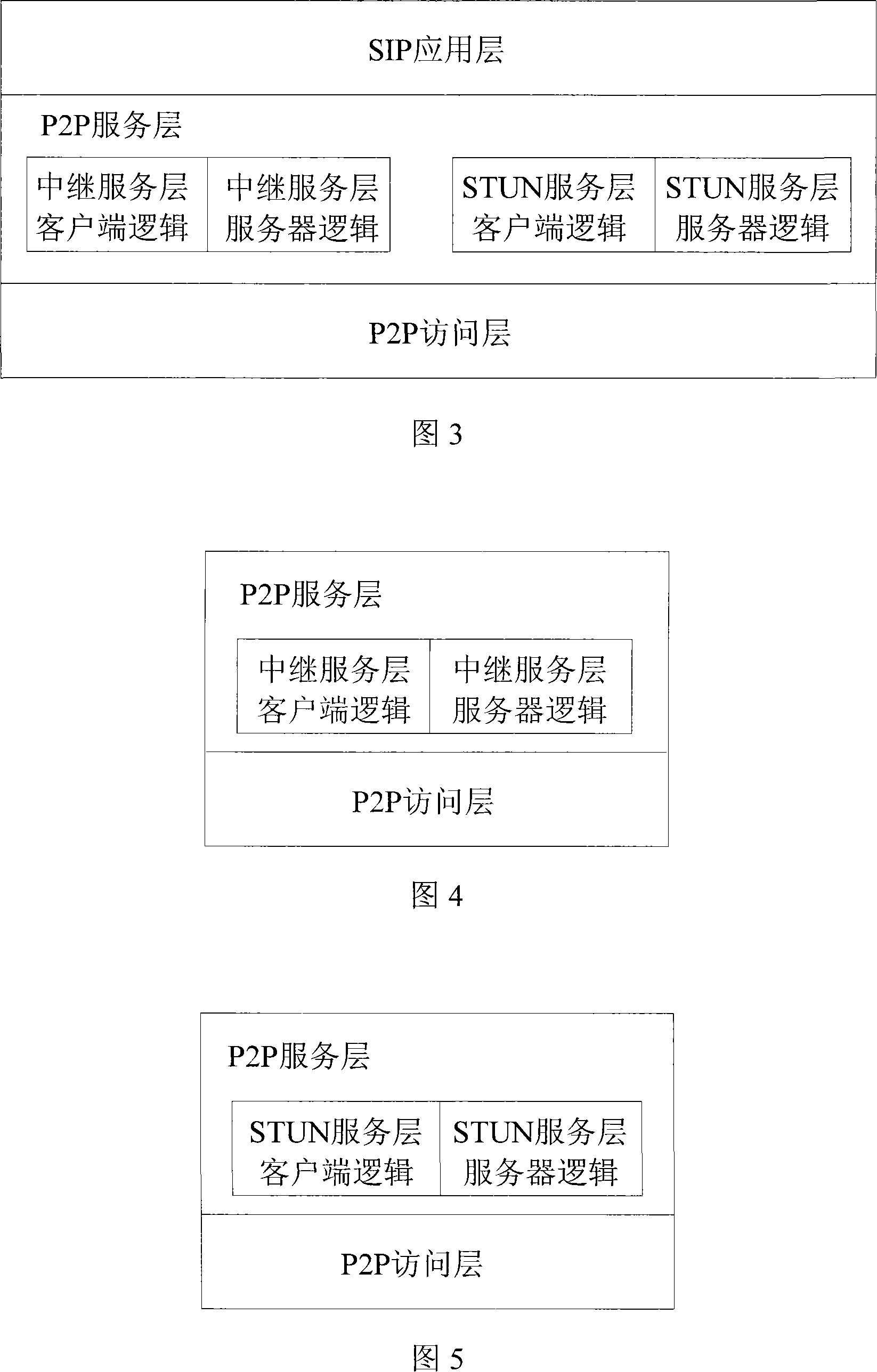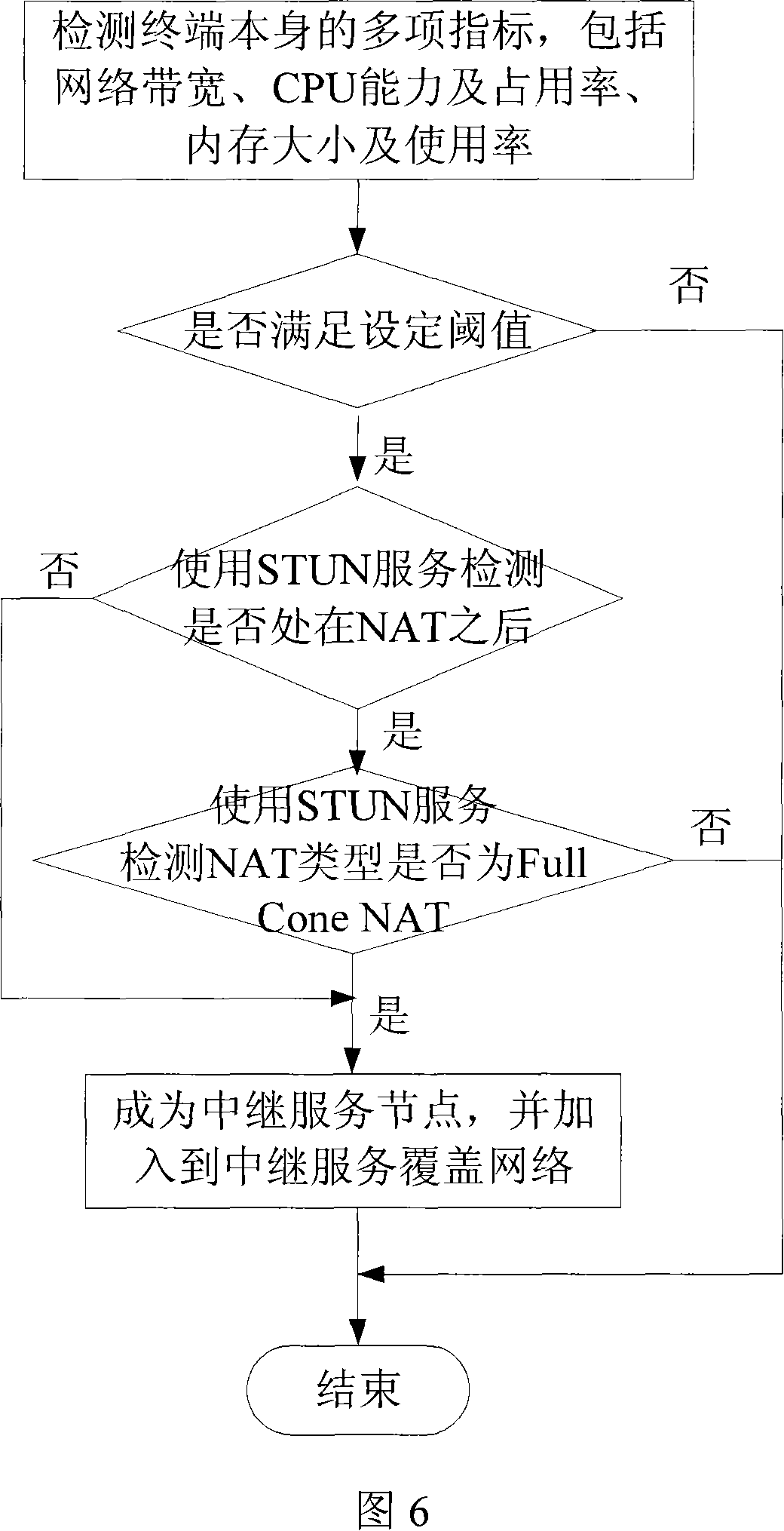SIP soft switching system supporting P2P media transmission and its implementation method
A technology of media transmission and implementation method, applied in the field of network communication, can solve problems such as poor controllability and manageability, lack of profit, sustainable development of operation mode, etc., achieve good controllability and manageability, improve communication quality, The effect of good compatibility
- Summary
- Abstract
- Description
- Claims
- Application Information
AI Technical Summary
Problems solved by technology
Method used
Image
Examples
Embodiment Construction
[0044] 1. System structure composition
[0045] As shown in Figure 1, the SIP softswitch system supporting P2P media transmission in the present invention includes a signaling control server, a media relay server, a super relay service node, a STUN service node, and a P2P client or a common client, using the extended SIP protocol As a communication protocol at the signaling control layer, the signaling control server at the center of the system centrally processes and forwards; media transmission supports media relay server forwarding, point-to-point direct communication in ICE mode, and multiple paths for P2P network transmission; among them, P2P network transmission The path is optimized according to the established strategy, and finally the communication terminal selects the media transmission path according to the established evaluation mechanism; the media stream transmission adopts the encryption method, and the encryption key is negotiated by the communication parties du...
PUM
 Login to View More
Login to View More Abstract
Description
Claims
Application Information
 Login to View More
Login to View More - R&D
- Intellectual Property
- Life Sciences
- Materials
- Tech Scout
- Unparalleled Data Quality
- Higher Quality Content
- 60% Fewer Hallucinations
Browse by: Latest US Patents, China's latest patents, Technical Efficacy Thesaurus, Application Domain, Technology Topic, Popular Technical Reports.
© 2025 PatSnap. All rights reserved.Legal|Privacy policy|Modern Slavery Act Transparency Statement|Sitemap|About US| Contact US: help@patsnap.com



